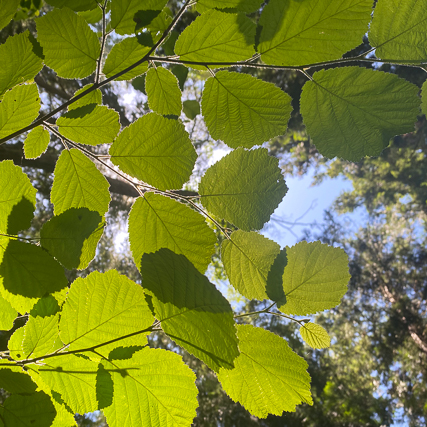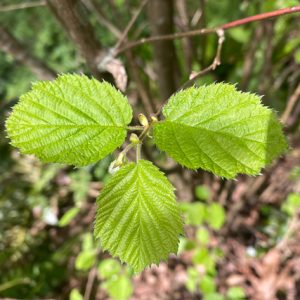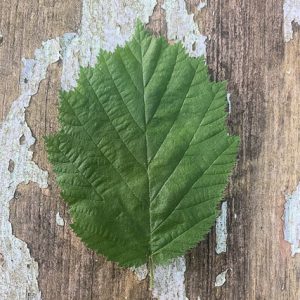fauntleroy tree walk
Beaked Hazelnut
lushootseed name:
![]()
latin name:
Corylus cornuta

habitat
This plant can be found from British Columbia all the way to south central California west of the Cascade Crest. It prefers to live in moist to well drained soils along riparian corridors. It enjoys the warmth of open to lightly shaded canopies at low to mid elevations of forests. This tree thrives in these sunny areas. Look at this forest and observe how the park’s past of logging has created breaks in the canopy that favor this sun-loving species. Although, this tree is known to thrive anywhere from shady old growth forests to sunny sites recently impacted by forest fires.

Identification
growth habit
Standing small at 3-16 feet is this shrub to a small tree. It is a slow growing species that lives for a short number of years.

leaves
Alternating along the stem, these leaves are elliptic to oval with a sharply tapered tip. The leaf margins have numerous teeth along its margins, referred to as doubly serrate. Take a closer look at the soft hairs found on the leaf surface and stalk, giving the leaf its velvety texture. These hairy stalks are attached to the base of a leaf, which has a “cordate” or heart-like shape.


flower
Male flowers appear as gold to brown, hanging clusters called catkins. Female flowers arise from a hairy bud and sport brilliant fuchsia to red saffron-like sprigs.


fruits
Plants in the hazelnut genus are known for the delicious nut fruits that they produce. The hazelnuts of this species are housed within a green, velvety husk with prominent beaks, hence the common name “beaked hazelnut”. These nuts are typically clustered in pairs of 2, and sometimes 4.

bark

Look-a-likes
Ecology
The reason that this species tends to grow in a clustered- form is due to its mode of movement and reproduction throughout the landscape being facilitated by caching rodents like chipmunks and squirrels. These animals tend to collect fruits like hazelnuts throughout the fruiting season and store them for future use in piles hidden and covered by leaf litter. This acts as a method of planting, as the cluster of hazelnuts that are not eaten by these rodents are left to sprout from the forest floor.
Although less common, other animals such as jays and black bears will eat the seeds of this species and further contribute to the movement of this species within the forest. Beavers, moose, elk, and deer will browse on the plush twigs, especially in the winter months.
This shrub will have “mast” years where it pushes out numerous fruits to overwhelm the number of hungry creatures and ensure that some seeds survive to become new shrubs. To keep the population size of rodents at bay, it will strike balance in the system by having low production years.
This shrub species has been used in restoration work due to its hardiness in disturbed areas. Not only does it like sunny, open canopies, but disturbances like forest fires and logging stimulates the vegetative growth of this species. As this tree is triggered, it vigorously sprouts from its root system. Beaked hazelnut acts as an early-succession species in rebuilding its ecosystem.
Ethnobotany
Like its cousin European hazelnut, the common nut found in grocery stores, the local beaked hazelnut, has an edible and delicious nut which people have been eating for centuries. Coast Salish peoples highly valued this food source and would collect upon its ripening in summer. It is hard to beat the resident rodents to the hazelnuts, therefore local nations’ peoples have been known to send young hunters to follow rodents and track locations of caches. After letting the rodents work hard to collect the nuts, they would collect a portion of the animal’s cache!
Hazelnuts were stored underground in cool dry pits for later use. This food source was used as a protein-rich snack and in trade with nations who do not have this species as readily available in the landscape.
Limber sprouts of this tree were used to make arrows, fishnets, baby carriers, and baskets. Twigs were brewed or chewed directly on by teething babies to relieve toothache. Bark has also been used as an astringent, wormer, and purgative.
